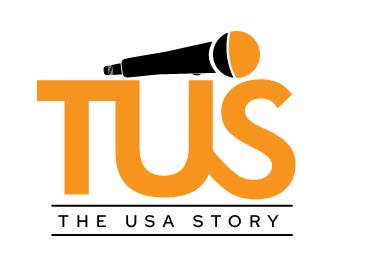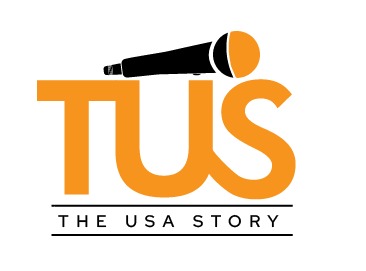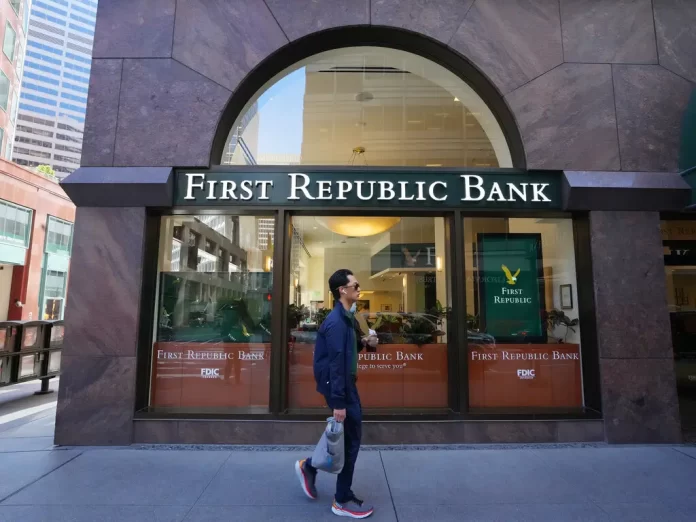As part of the deal, 84 First Republic branches in eight states reopened as JPMorgan branches on Monday.
Regulators seized control of First Republic Bank and sold it to JPMorgan Chase on Monday, a dramatic move aimed at curbing a two-month banking crisis that has rattled the financial system.
First Republic is the second largest U.S. bank by assets to collapse after Washington Mutual, which failed during the financial crisis of 2008 and was also acquired by JPMorgan.
Founded in 1985 and the 14th largest U.S. bank as of earlier this year, First Republic’s assets were battered by the rise in interest rates, and the company had struggled to stay alive after two other lenders collapsed in March, spooking depositors and investors.
The takeover of First Republic by the Federal Deposit Insurance Corporation and sale to JPMorgan was announced hours before U.S. markets opened, and after a scramble by officials over the weekend. On Monday, 84 First Republic branches in eight states reopened as JPMorgan branches.
“This part of the crisis is over,” Jamie Dimon, JPMorgan’s chief executive, said on a conference call Monday. “For now we should all just take a deep breath.”
Investors welcomed JPMorgan’s takeover, sending the bank’s stock 3.5 percent higher Monday. The stocks of PNC Financial Services and Citizens Financial Group — two regional banks that lost out on a bid for First Republic — each traded down more than 5 percent.
First Republic’s shareholders and debt holders will be wiped out in this deal, a typical occurrence when a bank is put in government receivership. The First Republic name and its logo — a swooping eagle with its wings in a V-shaped formation — will be phased out, and the bank’s branches will become JPMorgan Chase outlets.
President Biden also welcomed the takeover during a speech on small business on Monday afternoon. “These actions are going to make sure that the banking system is safe and sound,” Mr. Biden said from the Rose Garden. He added: “While depositors are being protected, shareholders are losing their investments. And critically, taxpayers are not the ones that are on the hook.”
The F.D.I.C. estimated that its insurance fund, which is made up of the fees banks pay the agency for insuring deposits, would have to pay out about $13 billion to cover First Republic’s losses. JPMorgan also said that the F.D.I.C. would provide it with $50 billion in financing and that JPMorgan would pay $10.6 billion to the F.D.I.C.
“Our government invited us and others to step up, and we did,” Mr. Dimon said. He said the transaction was intended “to minimize costs to the Deposit Insurance Fund.”
The acquisition makes JPMorgan, already the nation’s largest bank, even bigger and was already being criticized by some lawmakers. “Since the 2008 financial crisis, regulators have tried to prevent the biggest banks from becoming more dominant,” Ian Katz, an analyst at Capital Alpha Partners, wrote in a research note. JPMorgan’s increase in size “will displease lawmakers from both sides of the aisle, but be particularly grating to progressives who have fought against consolidation via M&A.”
First Republic failed despite having received a $30 billion lifeline from 11 of the country’s largest banks in March. JPMorgan said the $30 billion would be repaid after the deal closes.
The government’s takeover and sale of First Republic comes roughly eight weeks after the government took control of Silicon Valley Bank and Signature Bank, whose failures sent a shock wave through the industry and raised fears that other regional banks were at risk of similar runs on deposits.
Many banking experts said First Republic’s travails were a delayed reaction to the turmoil in March rather than the opening of a new phase in the crisis. Investors and industry executives are optimistic that no other midsize or large lenders are at risk of imminent failure.
Like the other two failed banks — Silicon Valley Bank and Signature — First Republic collapsed under the weight of loans and investments that lost billions of dollars in value as the Federal Reserve rapidly raised interest rates to fight inflation. When it started becoming apparent that those assets were now worth much less, First Republic’s affluent customers, most of whom live on the coasts, began pulling their money out as quickly as they could and investors dumped its shares.
“The cardinal sin of FRC and SVB is they grew too fast when interest rates were near 0 percent,” said Timothy Coffey, a bank analyst at Janney Montgomery Scott, wrote in a research note, referring to First Republic and Silicon Valley Bank. “There were likely others. However, it is a very limited set of institutions as the vast majority of banks passed on picking up pennies in front of a steamroller.”
Even so, the U.S. financial system has plenty of problems. The recent bank failures and rising interest rates have forced banks to rein in lending, making it harder for businesses to expand and individuals to buy homes and cars. That is one of the reasons that the economy has been slowing in recent months.
The end of First Republic came after weeks in which the bank and its advisers sought either to save the bank or find a buyer outside of a government takeover. But the efforts fell flat: Other banks were reluctant to buy it or pieces of it without assurances that they wouldn’t be left with billions of dollars in losses. By last week, after an alarming earnings report in which the bank disclosed that customers had withdrawn more than half of its deposits, it became clear that there was no option outside a government takeover.
Late last week, the F.D.I.C. reached out to other financial institutions, including JPMorgan Chase, PNC Financial Services and Bank of America, seeking bids for First Republic. Bidders had until noon Sunday to submit their offers. As part of the bidding process, banks were also asked what accommodations they’d seek from the government to move forward, people familiar with the process said.
The sales process was expected to be wrapped up by Sunday evening, but the announcement took place in the middle of the night. JPMorgan’s Mr. Dimon said the bank had 800 employees working on the deal over the past several days.
The banking crisis has also put federal regulators on the defensive by exposing problems that analysts said government officials should have identified and forced the banks to fix months ago. Last week the Fed and the F.D.I.C. published reports criticizing themselves for failing to adequately regulate Silicon Valley Bank and Signature. The reports also blamed the banks for poor management and excessive risk-taking.
First Republic had many clients in the start-up industry — similar to Silicon Valley Bank — and in the financial industry, including senior bankers and hedge fund managers. Many of its accounts held more than $250,000, the limit for federal deposit insurance.
The latest bank closure probably keeps the Fed on track to raise interest rates a quarter point at its meeting on Wednesday, said Krishna Guha, head of the global policy and the central bank strategy team at Evercore ISI. In fact, he said, it may “clear the decks” for such a move by taking away a lingering source of risk and uncertainty.
But Mr. Guha said that the banking issues were moving from an “acute” to a “chronic” phase: Other lenders may look at First Republic and the other recent bank failures and try to shore up their own positions by becoming more cautious about lending.
“The macroeconomic effects of bank stress may only be in the early stage of unfolding,” Mr. Guha said.



